
FOV Comparison- Eyepieces
June 2014
This is just a fun page to show the different field of view (FOV) images I’ve captured from different telescope eyepieces much like the HMD FOV Comparison page. However, with the eyepieces and microdisplays I wanted to see what was the best image quality I could get for a ~60 degree horizontal FOV. The microdisplays I used were: eMagin WUXGA (1920×1200), eMagin SXGA (1280×1024), and MicroOLED MDP02A (2560×2048). These are all OLED micropdisplays. The eMagin displays are color as seen below. The MicroOLED is monochrome green.
Some of the images show significantly more pin cushion distortion than is actually visible in the eyepiece. It can be difficult to get a nice image of an eyepiece using a camera. There are several eyepieces which have FOVs which overfill the camera FOV such as the TSWA17 and ES16. These eyepieces will show a clipped image indicated by the video content filling all the way to the image edges.
Each image below has a resolution of 4608×3456 displayed at 420×315 (still 4:3 aspect ratio). The calculation of resolution of an eyepiece is a function of number of pixels of the microdisplay and FOV of the optic; RES=60*FOV/(num of pixels). 20/20 Snellen is considered normal visual acuity by your eye doctor which corresponds to RES=1.0 arcmin/pixel. Lower than 1.0 is better resolution and higher than 1.0 is worse resolution. You can find more detailed information in this book if you’re interested–> Head Mounted Displays: Designing for the user; Melzer and Moffitt; McGraw Hill, 1997. I calculate FOV based on microdisplay dimensions and the focal length of the lens. I could be off a degree or two here or there due.
There is also quite frequently softening at the edges when the FOV is larger than ~45 degrees with commercial off the shelf (COTS) optics. This is basically a defocus of the image as you approach the edges of the optics. The camera takes a sharp image across the entire FOV but when viewed with the naked eye there is quite a bit of softening of the edges. Other issues include very small exit pupil and even vignetting. Google for more information on those last terms.
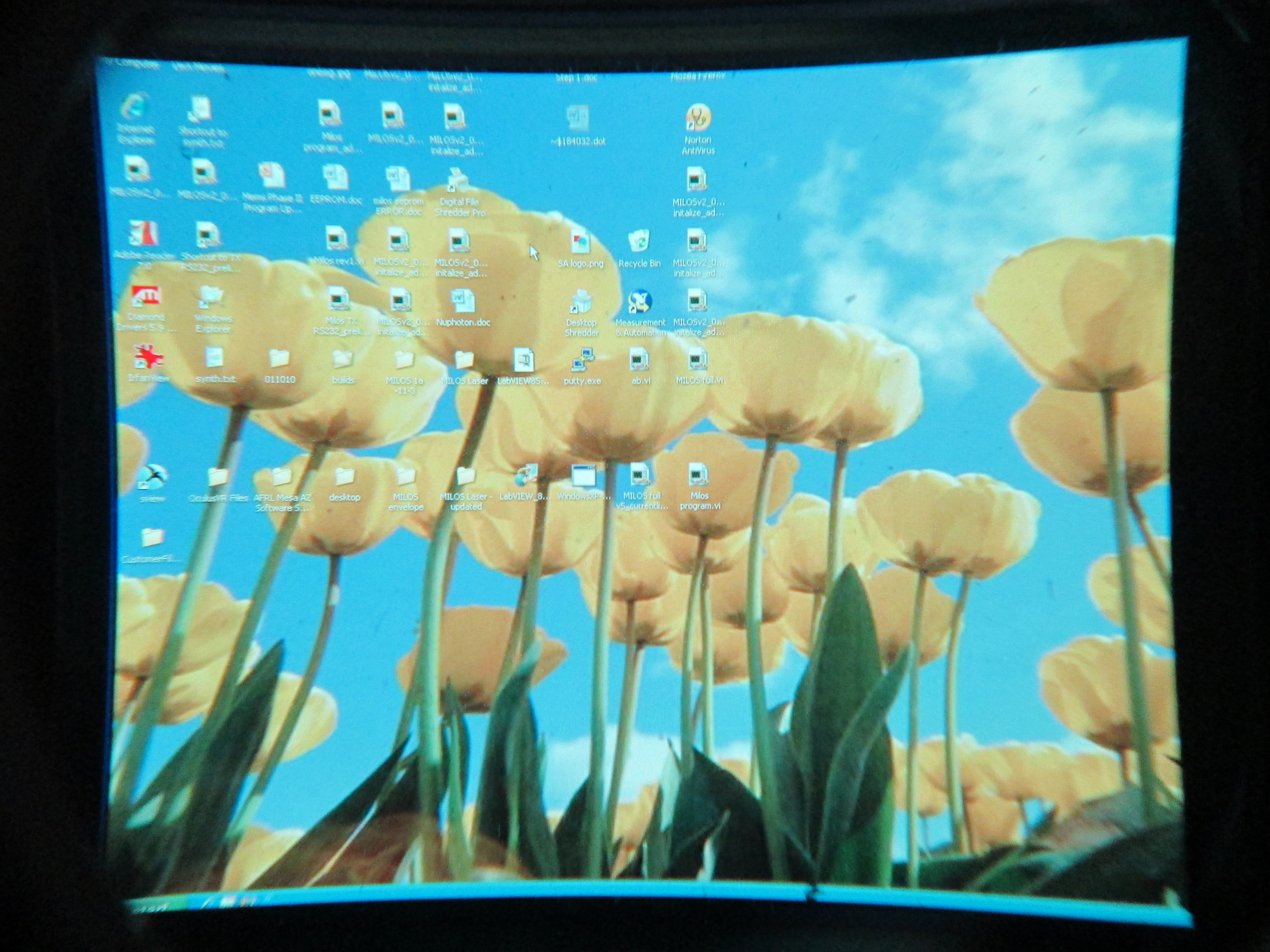
eMagin SXGA. 1280×1024 pixels. TSWA17 optic. 48.6 deg. H.FOV. 2.28 arcmin/pixel |
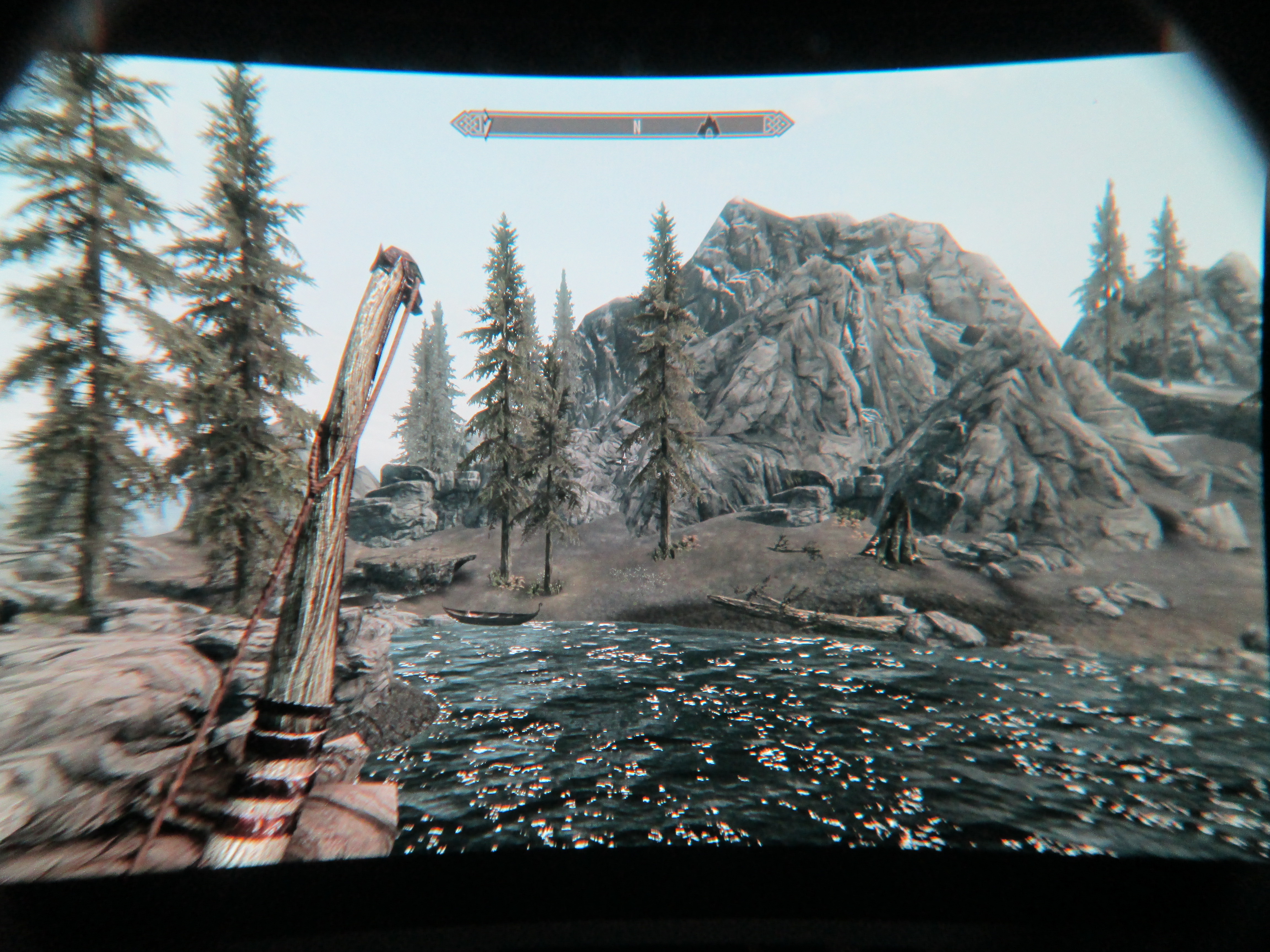
eMagin WUXGA. 1920×1200 pixels. TSWA17 optic. 57.6 deg. H.FOV. Overfills camera FOV. 1.8 arcmin/pixel |

eMagin SXGA. 1280×1024 pixels. TSWA20 optic. 42.0 deg. H.FOV. 2.00 arcmin/pixel |
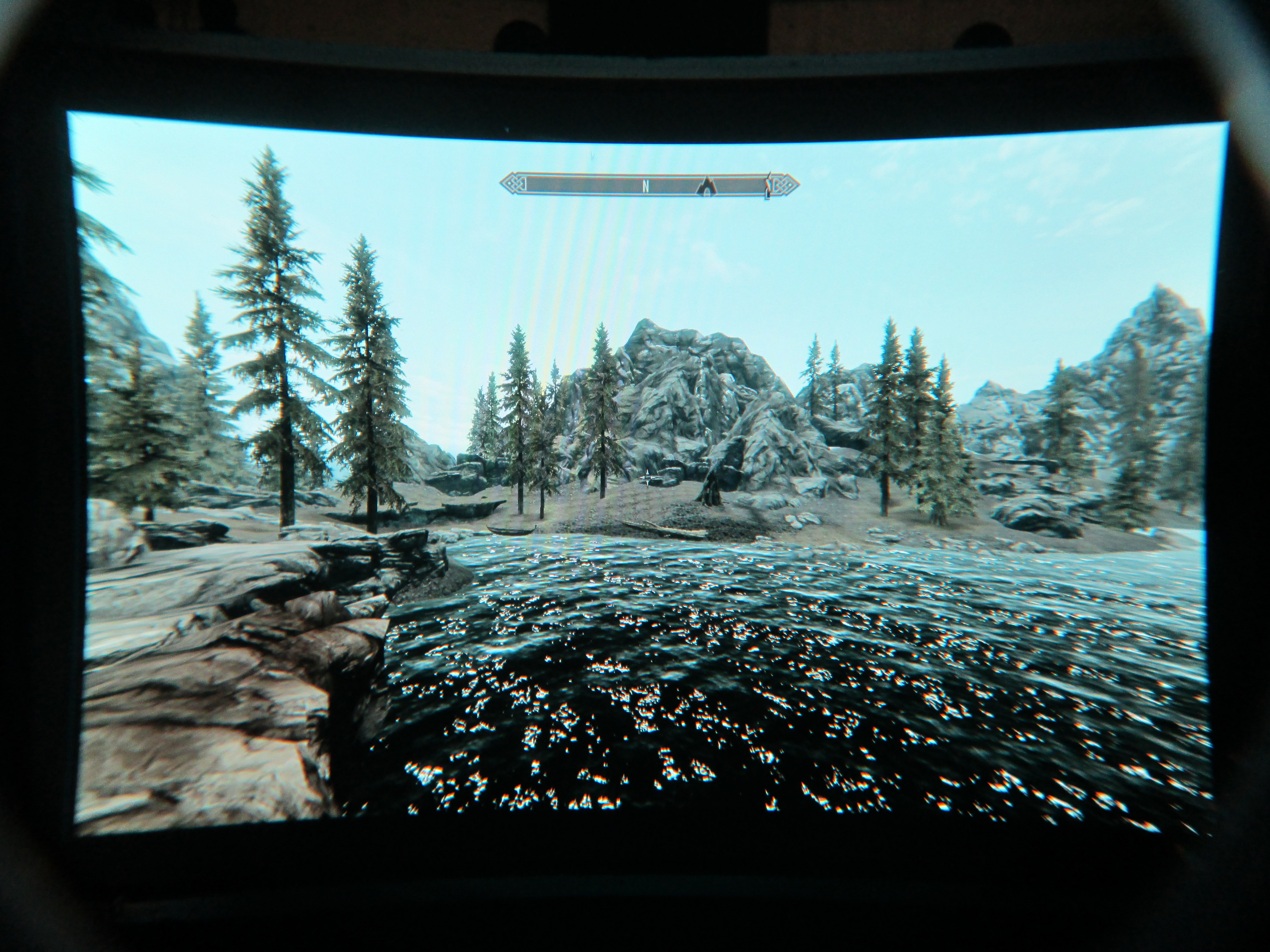
eMagin WUXGA. 1920×1200 pixels. TSWA20 optic. 50.11 deg. H.FOV. 1.57 arcmin/pixel |
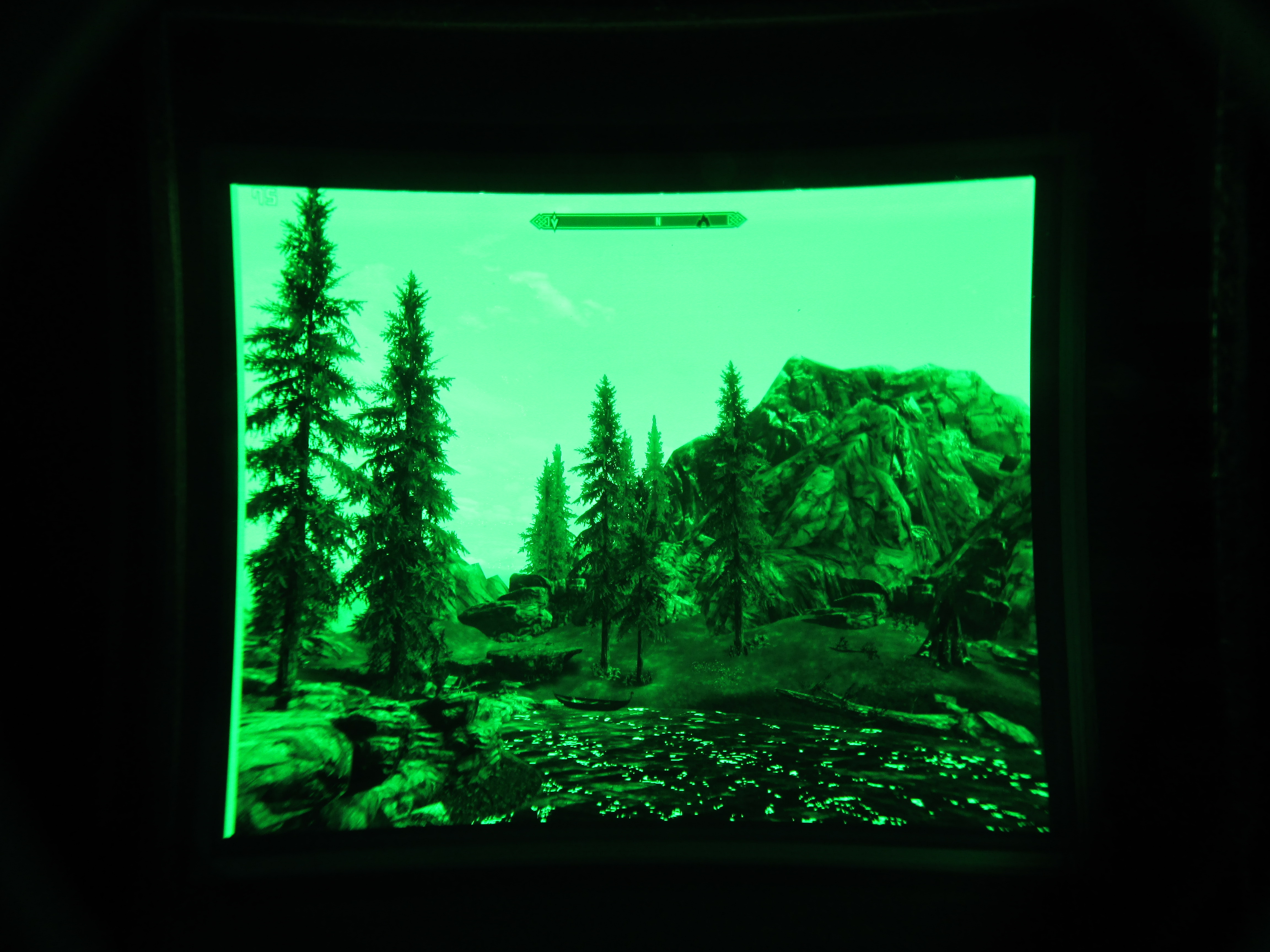
MicroOLED Monochrome Green. 2560×2048 pixels. TSWA17 optic. 38.9 deg. H.FOV. 0.912 arcmin/pixel |
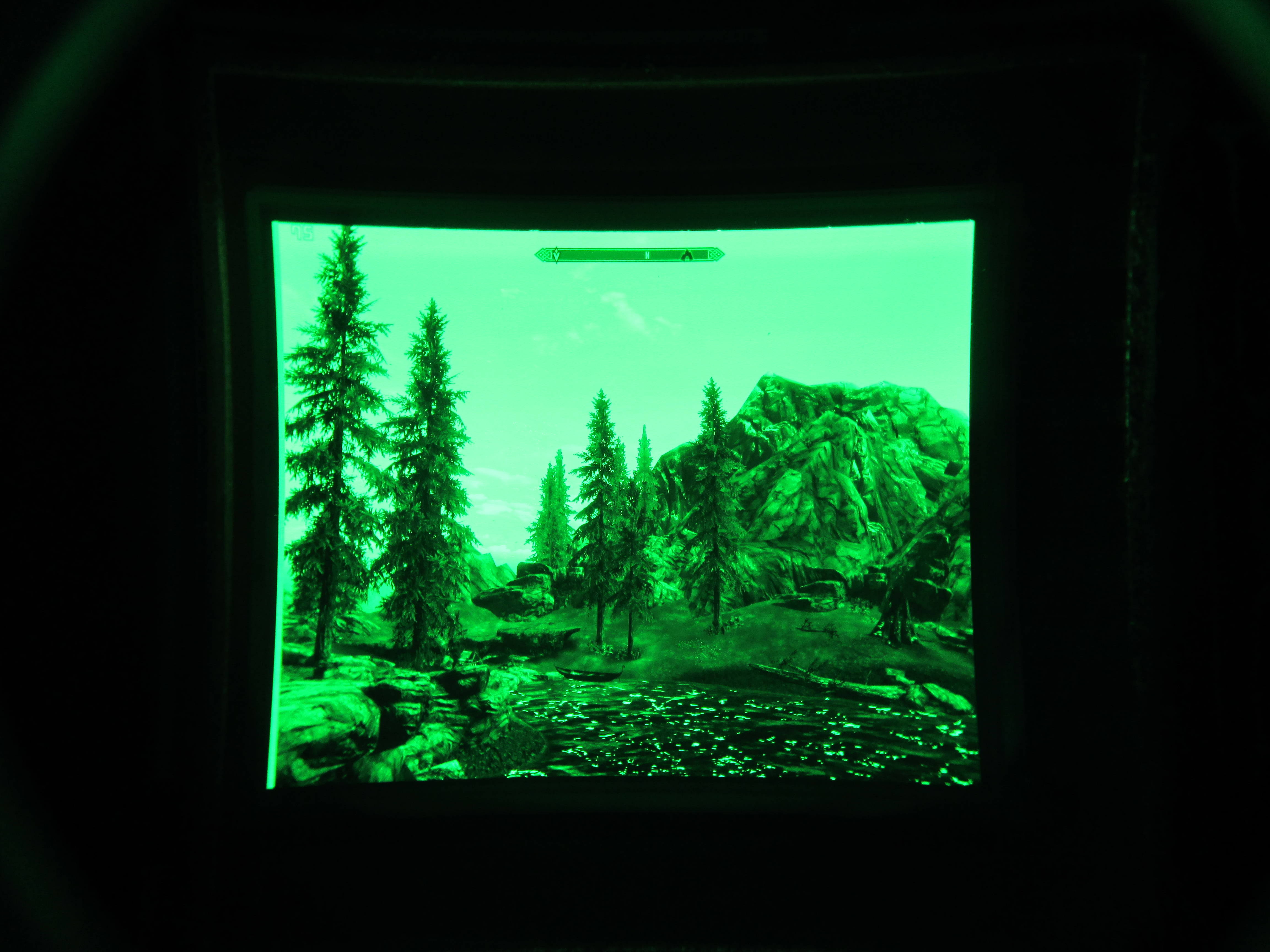
MicroOLED Monochrome Green. 2560×2048 pixels. TSWA20 optic. 33.48 deg. H.FOV. 0.78 arcmin/pixel |

MicroOLED Monochrome Green. 2560×2048 pixels. ES16 optic. 41.2 deg. H.FOV. 0.965 arcmin/pixel |
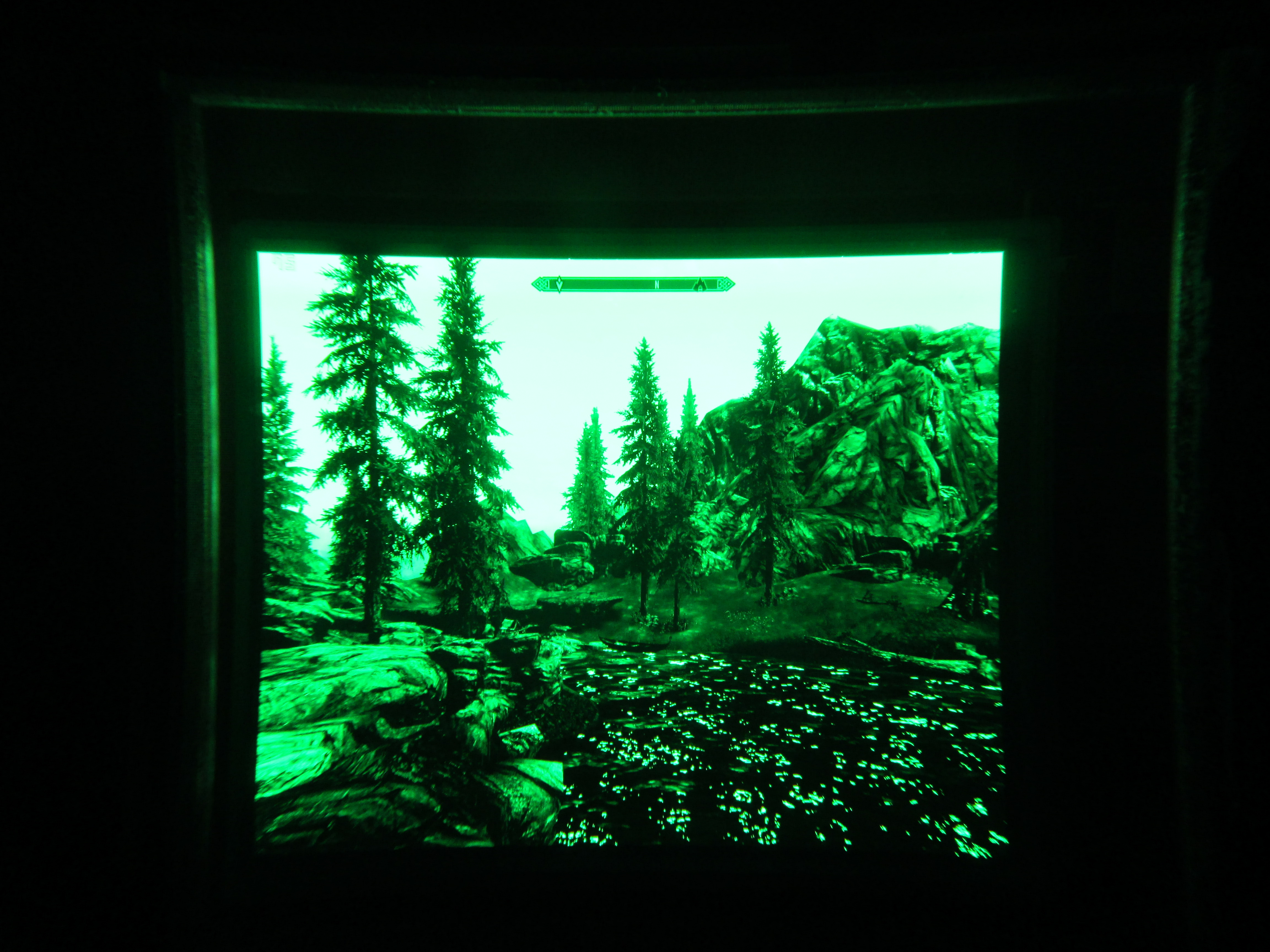
MicroOLED Monochrome Green. 2560×2048 pixels. Nagler17 optic without barlow. ~35 deg. H.FOV. 0.82 arcmin/pixel |
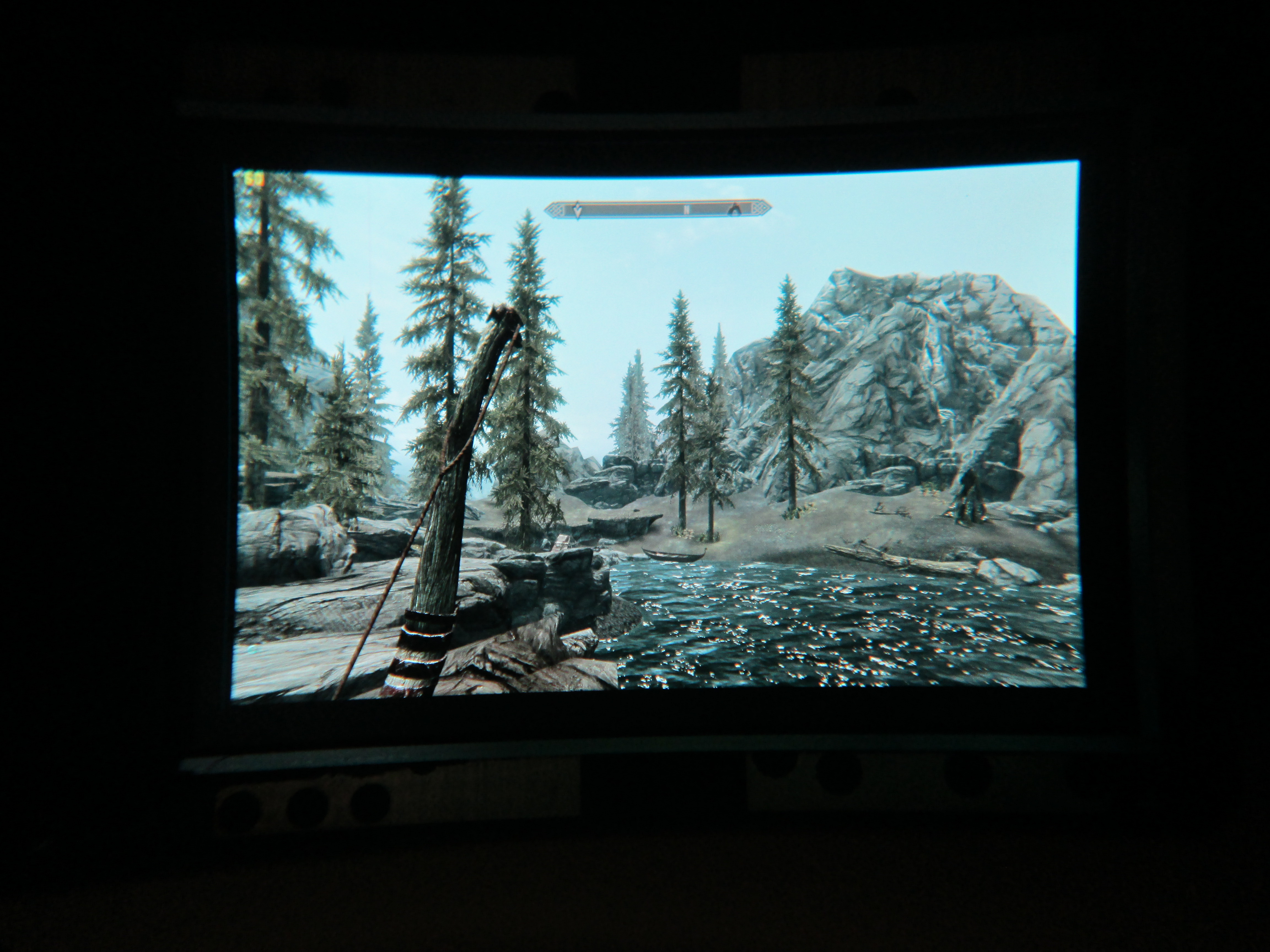
eMagin WUXGA. 1920×1200 pixels. Luminos 19 optic. ~45 deg. H.FOV. 1.41 arcmin/pixel |
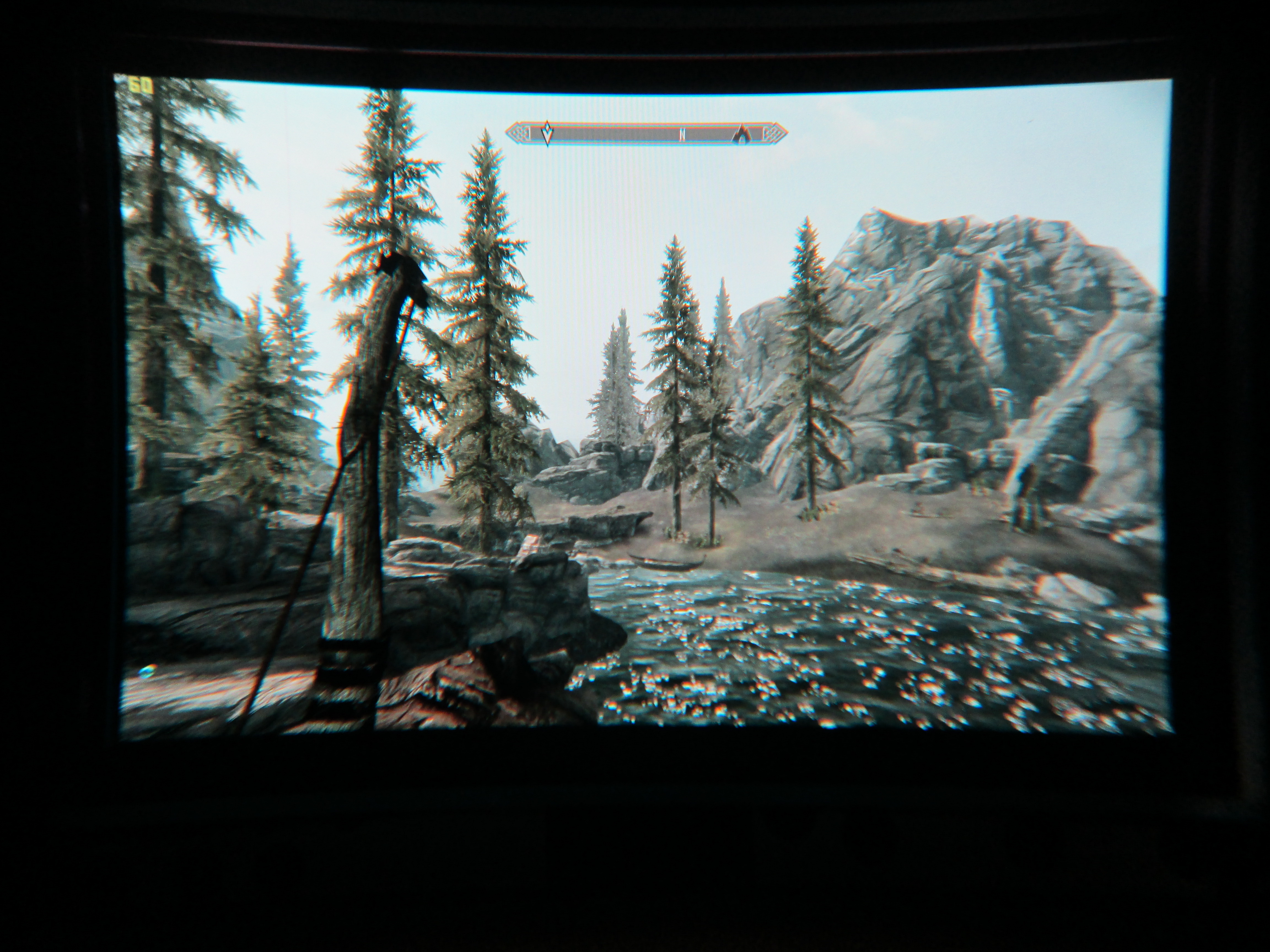
eMagin WUXGA. 1920×1200 pixels. ES 18 optic. ~50 deg. H.FOV. 1.56 arcmin/pixel |

eMagin WUXGA. 1920×1200 pixels. Nagler 16 optic without barrel. ~55 deg. H.FOV. 1.72 arcmin/pixel. |
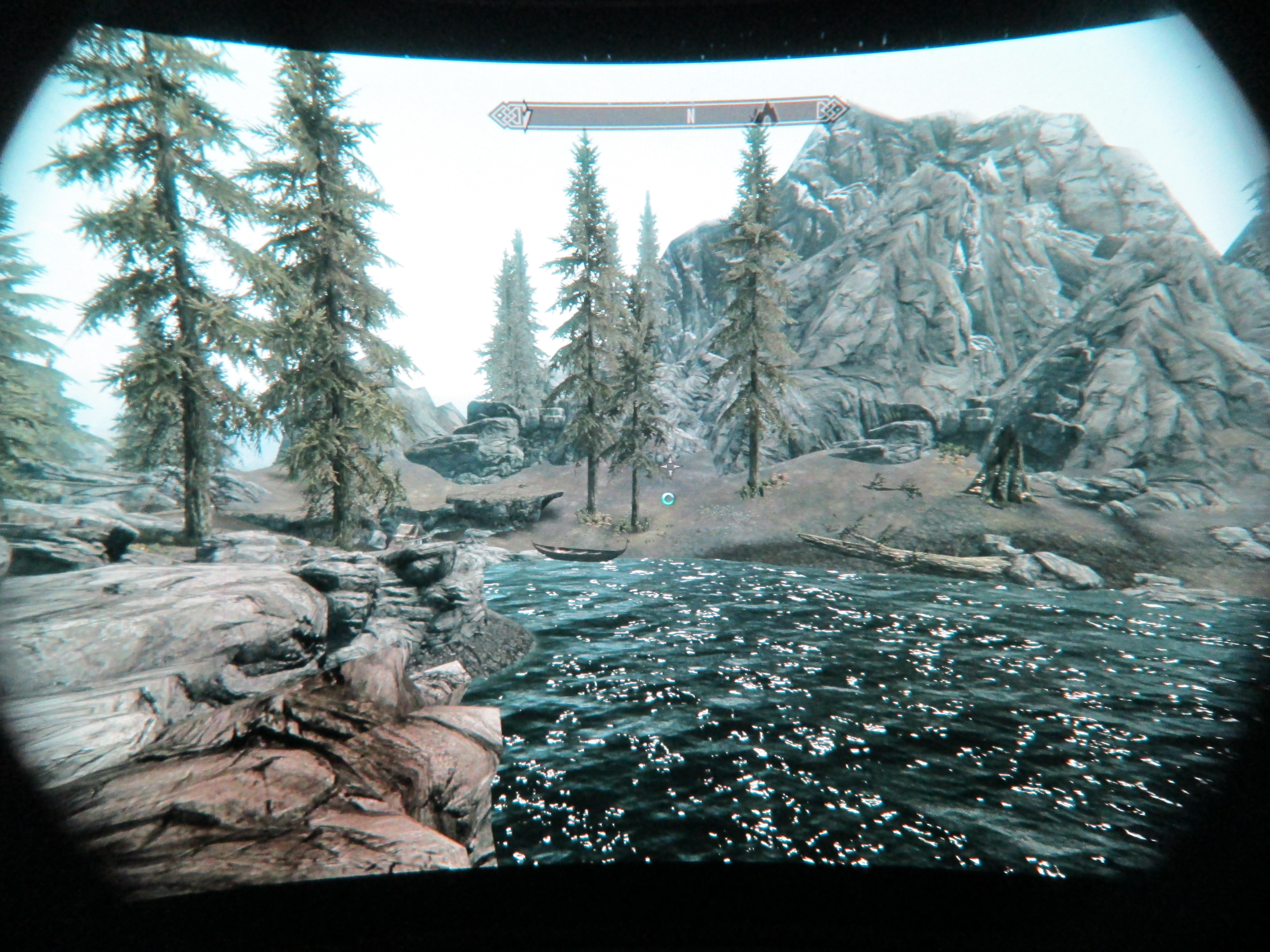
eMagin WUXGA. 1920×1200 pixels. ES 16mm optic. ~60 deg. H.FOV. 1.875 arcmin/pixel. |
As you might expect it’s quite difficult to get a nice crisp image out to 60 degrees horizontal FOV with a microdisplay and COTS optics. The closest ones I’ve found so far are the Nagler 16mm (without barlow lens) and the Explore Scientific 16mm. Even with these eyepieces there’s softening at the edges which cause things to look blurry. The exit pupils are very small; probably close to 3-4mm. When you’re looking right on axis with the optic (meaning eyes straight ahead) then everything looks very high resolution. However, when you start looking around the displays then the blurry edges are quite noticeable and often distracting. For what it cost to purchase the microdisplays ($1k to $4k per eye!!), it’s not worth trying to build a low end HMD with COTS optics. You basically waste all those HD pixels you would pay so dearly for.
So that’s my conclusion after trying many different COTS telescope eyepieces. I’ve tried a few others that aren’t shown above. If the image was really bad I didn’t bother posting the results. Building a low end HMD with COTS optics and microdisplays doesn’t seem worth the cost at the moment. It saves some money if you go to a lower resolution OLED like 800×600 but your resolution really starts to suffer. Maybe when the HD microdisplay cost comes down I’ll build a prototype. Otherwise, you’re paying for what you get with those higher end HMDs with nice crisp custom optics.
 Mellott's VR
Mellott's VR